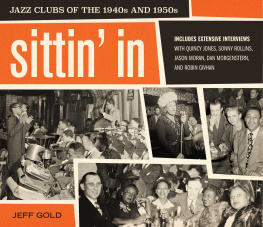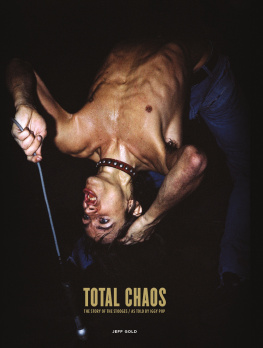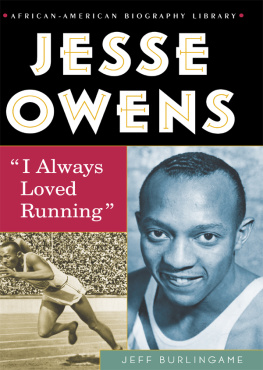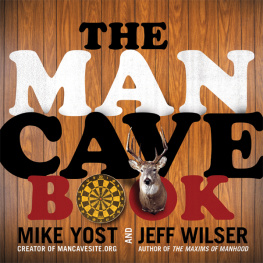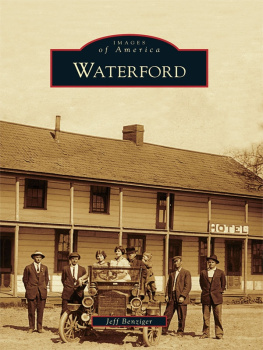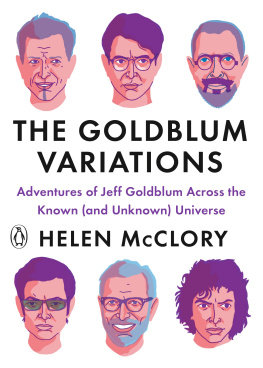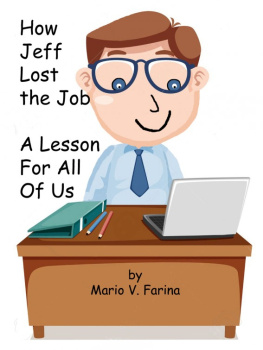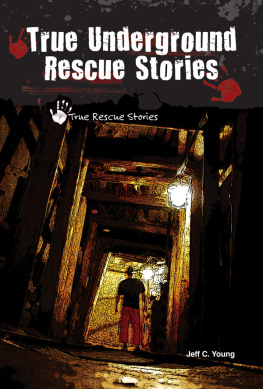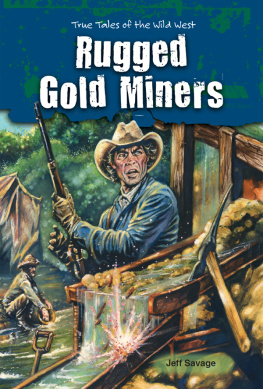Jeff Gold - Sittin In
Here you can read online Jeff Gold - Sittin In full text of the book (entire story) in english for free. Download pdf and epub, get meaning, cover and reviews about this ebook. year: 2020, publisher: Harper Design, genre: Non-fiction. Description of the work, (preface) as well as reviews are available. Best literature library LitArk.com created for fans of good reading and offers a wide selection of genres:
Romance novel
Science fiction
Adventure
Detective
Science
History
Home and family
Prose
Art
Politics
Computer
Non-fiction
Religion
Business
Children
Humor
Choose a favorite category and find really read worthwhile books. Enjoy immersion in the world of imagination, feel the emotions of the characters or learn something new for yourself, make an fascinating discovery.
- Book:Sittin In
- Author:
- Publisher:Harper Design
- Genre:
- Year:2020
- Rating:4 / 5
- Favourites:Add to favourites
- Your mark:
- 80
- 1
- 2
- 3
- 4
- 5
Sittin In: summary, description and annotation
We offer to read an annotation, description, summary or preface (depends on what the author of the book "Sittin In" wrote himself). If you haven't found the necessary information about the book — write in the comments, we will try to find it.
Sittin In — read online for free the complete book (whole text) full work
Below is the text of the book, divided by pages. System saving the place of the last page read, allows you to conveniently read the book "Sittin In" online for free, without having to search again every time where you left off. Put a bookmark, and you can go to the page where you finished reading at any time.
Font size:
Interval:
Bookmark:

Charlie Parker with fans at the Royal Roost, late 1940s.
From the collection of Marc and Mary Perkins

Photograph folder, the Royal Chicken Roost, 1948.
For my dear departed friends Eric Miller, Gary Stewart, and Hal Willner.

Fans at an unknown club, circa 1940s.

An integrated group at Chicagos Club DeLisa, mid-1940s. At left, one of the four DeLisa brothers.
In my work as a music executive, historian, collector, and dealer Ive had my fair share of crazy adventures, so sorting through the contents of a jazz collectors safe-deposit boxes in a closet-size room in a bank didnt strike me as particularly unusual. In the four hours I was there, I discovered many treasures that I coveted and eventually bought: concert tickets and handbills, autographs, contracts, letters, and other documents. But most interesting were the souvenir photographs from jazz clubs of the 1940s and 1950s. Each was in its own custom folder; the graphics were fantastic and so evocative of that classic era of jazz.
As I went through the boxes, I kept finding more photostwenty-five, fifty, one hundred, and, eventually, more than two hundredall mixed in with the rest of the collection. Some were well photographed, some were amateurish. But each had something to offer. Even before I finished, the thought struck me that the photographs would make a great book. If I hadnt seen pictures like these, I doubted many others had.
I bought all of them. Though the images were primarily of African Americans, some pictured white fans, and some showed mixed groups or white and Black people seated next to each other. There were couples on double dates, mothers and fathers with grown children, enlisted men and women in uniform, and even a picture of the Harriet Tubman Social Club. In a few, famous musiciansDizzy Gillespie, Charlie Parker, Duke Ellington, Art Blakey, Oscar Peterson, and Louis Armstrongposed with audience members. There was plenty of alcohol, which wasnt surprising.
These quick snapshots were taken by each clubs in-house photographer, developed on-site, and ready to be taken home at the end of an evening for a dollar, a cheap souvenir of a night out. Collectively, though, they are something altogether different, something important todaya visual record of a rarely seen and poorly documented world. An accidental history.
These pictures turn the camera around. Weve seen photographs of these clubs before, of the performers onstage, the marquees, the lines outside. But rarely, if ever, have we seen the audiences, the fans, as we do here. And they are a critical part of what jazz pianist, composer, and educator Jason Moran calls the ecosystem of jazz. Sonny Rollins told me that in small clubs like these, the audiences sort of played with you. Theyre like part of the band.
If youre looking for a comprehensive history of jazz, this isnt it. The focus here is on something that hasnt been properly explored: American jazz clubs of the 1940s and 1950swhat some call the golden ageas seen through the lens of these audience photographs and related memorabilia. Moran says, Seeing these images is powerful because we never document the jazz audience. The Library of Congress, for example, is home to more than 1,600 images taken by legendary jazz photographer William Gottlieb, only a tiny fraction of which picture audience members.
Almost all the souvenir photographs in this book date from the 1940s and 1950s. It doesnt seem many clubs had in-house photographers before 1940, and by the end of the 1950s, most of these clubs were out of business. As New York City was already well established as the jazz center of the world, the majority of the images here are from the citys clubs. But there were hundreds of other clubs in cities across America, and we are fortunate to have a representative sampling from many of them.
These photographs were made at a time when discrimination and segregation were the norm in the United States, and some of them document how jazz was really where the racial barriers were broken down heavily, according to Rollins.
I am incredibly fortunate that Quincy Jones and Sonny Rollins, who played these clubs, agreed to speak with me about the culture, the fans, and so much more. Im grateful to Jason Moran, who looked at these photographs through the eyes of a contemporary jazz musician and historian and shared his insights. Dan Morgenstern, a jazz historian without peer, shared his experiences as a patron of some of these clubs beginning in the late 1940s. And writer and cultural critic Robin Givhan graciously shared her insights on the photographs themselves. This book would have been a much lesser work without them.
Ive included whatever information I could find about the clubs, musicians, photographers, and mostly anonymous fans. But in some cases, we have only the photos. As I study them, they continue to reveal layers of information. It is my sincere hope they do the same for you.
JEFF GOLD
William P. Gottlieb/Ira and Leonore S. Gershwin Fund Collection, Music Division, Library of Congress
New York City wasnt always the jazz capital of the world. Jazz was born in New Orleans at the turn of the twentieth century, predominantly in the citys red-light district, Storyville, where bar owners and brothel keepers hired ragtime and blues musicians and members of the citys dance and marching bands to entertain customers. Legendary musicians like cornetist Buddy Bolden, who pioneered a looser, more improvised version of ragtime and added blues, and pianist Jelly Roll Morton, writer of Jelly Roll Blues, the first published jazz composition, helped shape the emerging sounds into what we today recognize as jazz.
But the development of jazz was driven both by the music and, just as often, by unrelated external circumstances. The first was in 1917, when the United States entered World War I. Concerned that troops were being distracted by the abundant sin on offer in Storyville, Secretary of War Newton Baker instituted orders prohibiting prostitution within five miles of military sites. The army and navy demanded that New Orleans close down Storyville, and the city complied.
When Storyville closed, many out-of-work musicians joined other job seekers headed north, as part of the beginnings of the Great Migration. The war had created jobs in Americas industrial centers, and hundreds of thousands of African Americans left their homes in the South in search of better employment and a less racially oppressive environment.
Chicago, the railroad center of the country, was a logical destination for many New Orleans musicians. The citys wartime economy was humming, and its clubs had abundant jobs for players. In the 1920s, Chicago became Americas second major jazz hub.
But things were happening in New York City too. In 1915, the Original Creole Band, featuring cornetist Freddie Keppard, performed at the Winter Garden, alongside comedians, jugglers, and various other performers. In 1917, the Original Dixieland Jass Band, a New Orleans via Chicago group, played a wildly successful engagement at Reisenwebers Caf on Columbus Circle and was recorded by the Victor label, resulting in the release that year of Livery Stable Blues, the first jazz record ever and an almost instant hit, eventually selling more than one million copies.
Font size:
Interval:
Bookmark:
Similar books «Sittin In»
Look at similar books to Sittin In. We have selected literature similar in name and meaning in the hope of providing readers with more options to find new, interesting, not yet read works.
Discussion, reviews of the book Sittin In and just readers' own opinions. Leave your comments, write what you think about the work, its meaning or the main characters. Specify what exactly you liked and what you didn't like, and why you think so.

